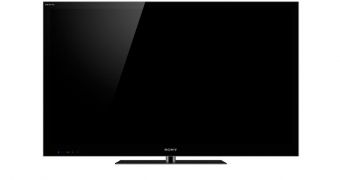Whether or not it bears implementing now that our eyes can't really tell the difference, ultra-high definition television appears to be the next goal of display experts.
Some might be wondering what the point of higher resolutions is in everyday television, since the difference isn't really all that noticeable on small and medium panels after a certain point.
Whether or not this is the case, the simple fact is that ITU researchers are already looking into the prospect of quad-FHS and UHD image quality.
“UHDTV will create an immersive experience for viewers and will generate a host of new business and marketing opportunities,” said Hamadoun Touré, ITU Secretary-General.
The International Telecommunications Union published an announcement on the matter, saying that an agreement was reached in most of the relevant technical features of the new standard.
“The 'relationship' that a viewer has with television viewing is linked to the overall experience of the picture and quality of sound,” said David Wood, chairman of the concerned ITU working party in the broadcasting service study group.
“The extremely high quality of UHDTV will have a definite impact on our lifestyle and on our engagement with the programs we watch.”
Some companies are already working on quad-FHD technologies, QFHD for short (3840 x 2160 pixels) and even the UHD (ultra-high definition, 7680 x 4320 pixels).
UHD also goes by the names of UHDTV and Super Hi-Vision (SHV).
Both UHD and QFHD apply to not just displays, but also cameras, since people will need something to shoot the super-high resolution videos with.
“UHDTV promises to bring about one of the greatest changes to audio-visual communications and broadcasting in recent decades. Technology is truly at the cusp of transforming how people experience audio-visual communications,” said Christoph Dosch, chairman of the broadcasting service study group.

 14 DAY TRIAL //
14 DAY TRIAL //